Guinea Flag Meaning
Three equal vertical stripes of red, yellow, and green representing the Pan-African colors, with red symbolizing sacrifice, yellow representing the sun and mineral wealth, and green representing the country's vegetation and agriculture.
- Continent
- Africa
- Adopted
- 1958
- Ratio
- 2:3
- Colors
- red, yellow, green
- Designer
- Unknown
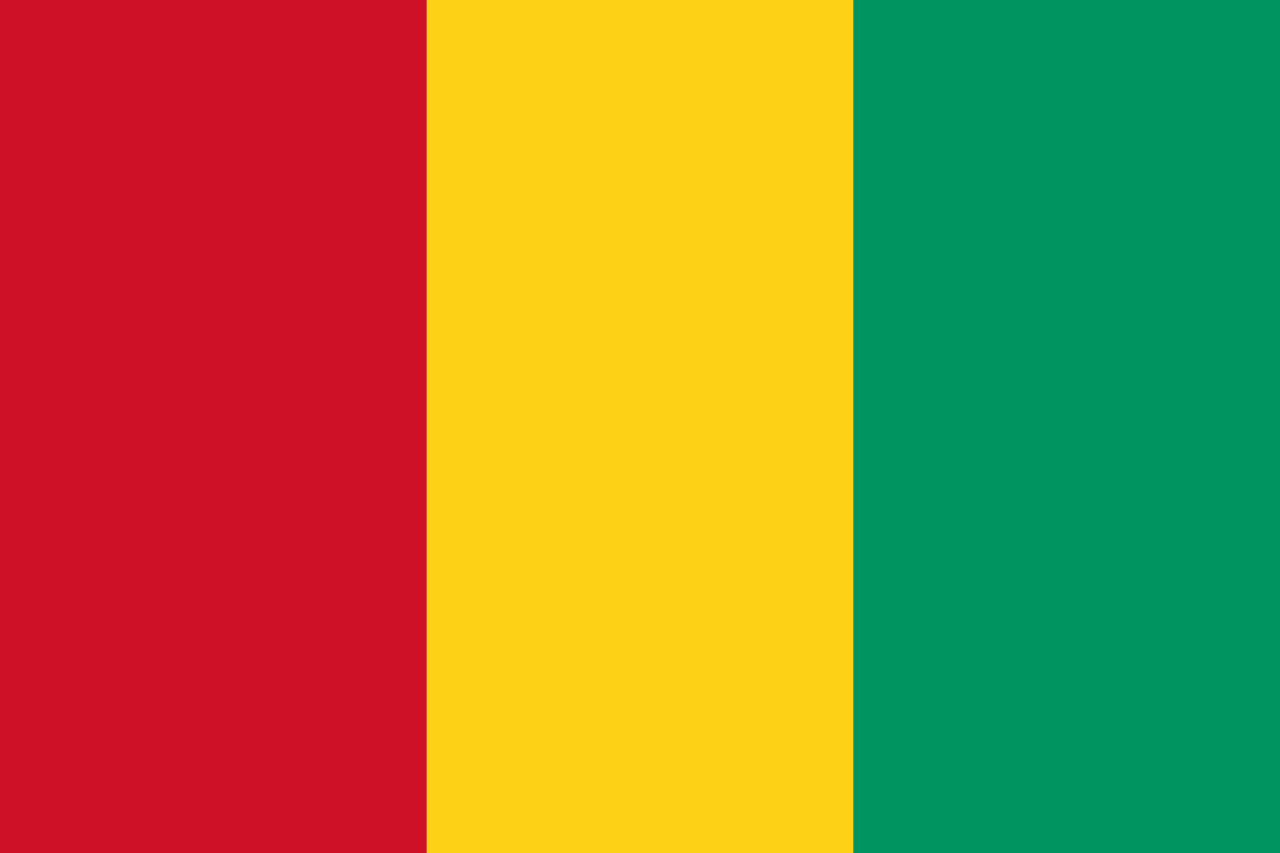
Symbolism
Red Stripe: Represents the blood shed by martyrs for independence and the sacrifice made by the Guinean people in their struggle against colonial rule, symbolizing the courage and determination of those who fought for freedom.
Yellow Stripe: Represents the sun that shines over Guinea and the country's abundant mineral wealth, particularly gold and bauxite deposits, symbolizing prosperity, optimism, and the natural riches that can fuel national development.
Green Stripe: Represents the lush vegetation and forests of Guinea, symbolizing the country's agricultural potential, natural beauty, and the fertile land that sustains the predominantly rural population.
History
- Pre-1890s: The region was home to powerful West African empires including Ghana, Mali, and Songhai, with the Fouta Djallon highlands serving as a center of Islamic learning and Fulani culture.
- 1890s-1958: French colonization established French Guinea as part of French West Africa, with colonial administration imposing French culture, language, and economic exploitation while suppressing local traditions.
- 1950s: The independence movement gained momentum under Ahmed Sékou Touré and the Democratic Party of Guinea, advocating for immediate independence rather than gradual autonomy within the French Union.
- September 28, 1958: Guinea voted 'No' in Charles de Gaulle's referendum on remaining in the French Community, becoming the first French African colony to gain complete independence and adopting the current flag design.
- October 2, 1958: Guinea officially declared independence with Ahmed Sékou Touré as president, immediately adopting the red-yellow-green tricolor as the symbol of the new Republic of Guinea.
- 1958-1984: Under Sékou Touré's rule, the flag represented a socialist state with close ties to the Soviet Union and China, while Guinea experienced political repression and economic isolation from the West.
- 1984-2008: Military rule under Lansana Conté brought some liberalization, with the flag representing attempts at democratic reform and economic recovery, though corruption and authoritarian practices persisted.
- 2008-Present: Following Conté's death and military coups, Guinea has struggled toward democratic governance, with the flag representing ongoing efforts to establish stable democratic institutions and economic development.
Trivia
- Guinea was the first French African colony to gain independence, inspiring other African independence movements and earning the nickname 'the beacon of African independence.'
- The flag represents a country that contains the source of the Niger River, one of Africa's most important waterways, in the Fouta Djallon highlands.
- Guinea has about one-third of the world's bauxite reserves, making it crucial for global aluminum production under this flag.
- The flag flies over a country with over 24 ethnic groups, with Fulani, Mandinka, and Susu being the largest, creating rich cultural diversity.
- Mount Nimba, shared with Liberia and Côte d'Ivoire, is a UNESCO World Heritage Site known for its unique biodiversity and endemic species.
- Guinea is sometimes called 'the water tower of West Africa' because major rivers including the Niger, Gambia, and Senegal originate in its highlands.
- The flag represents the homeland of Samori Touré, a legendary 19th-century resistance leader who fought against French colonization for nearly two decades.
- Conakry, the capital, is built on Tombo Island and the surrounding peninsula, making it one of Africa's major Atlantic ports.
- Guinea was severely affected by the 2014-2016 Ebola outbreak, which killed over 2,500 people and highlighted the country's healthcare challenges.
- The flag flies over a country where French is the official language, but most people speak local languages including Fulani, Mandinka, and Susu.
- Guinea's economy depends heavily on mining, agriculture, and fishing, with most of the population engaged in subsistence farming.
- The country has significant iron ore deposits in the Simandou mountains, representing some of the world's largest untapped high-grade iron ore reserves.
- Guinea's flag represents a predominantly Muslim country (about 85% of the population), with Islam having arrived through trade and conquest centuries ago.
- The Fouta Djallon region is known as the 'Switzerland of West Africa' due to its cool climate, highlands, and scenic beauty.
- Guinea has struggled with political instability, experiencing multiple military coups since independence, with the flag representing hopes for democratic consolidation.
Related Countries
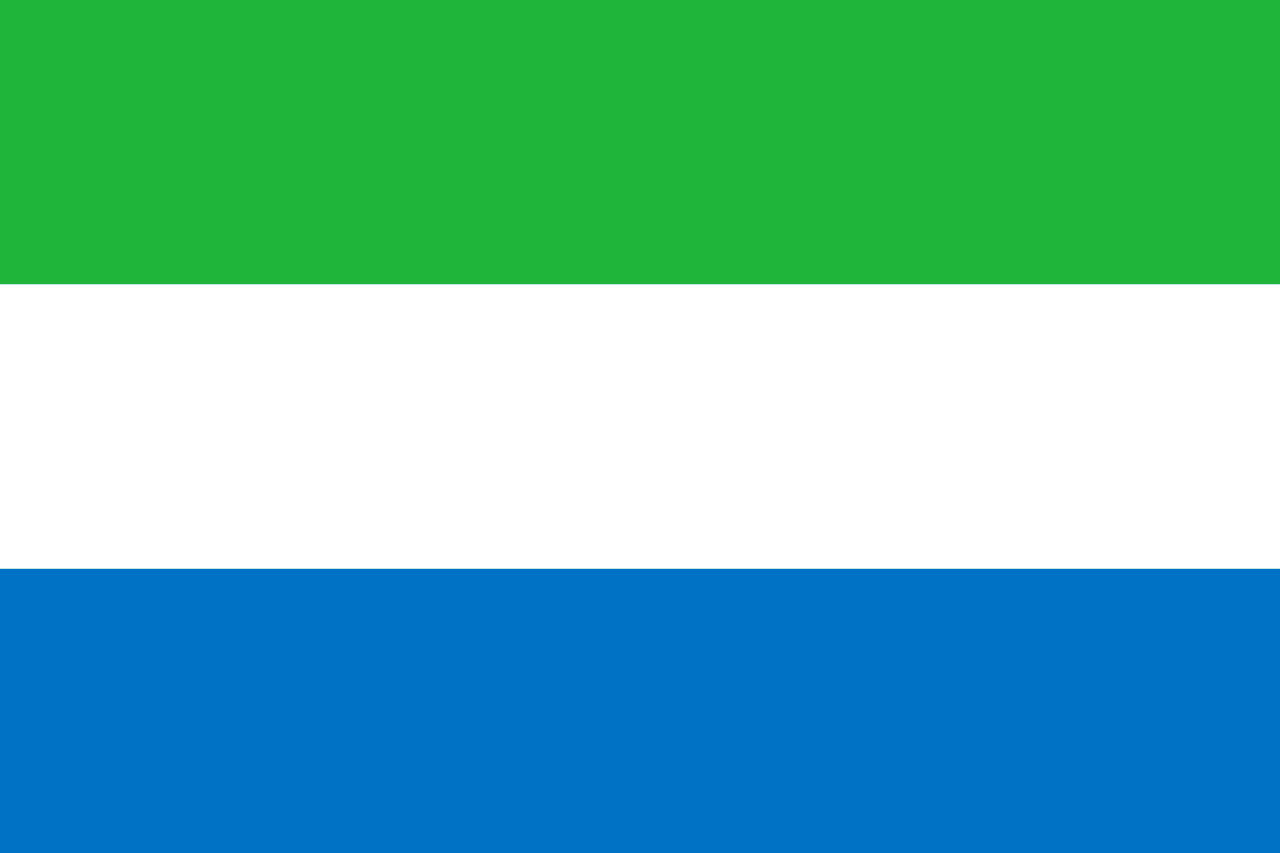
Sierra Leone
Africa
A horizontal tricolor of green, white, and blue, symbolizing the land, unity and justice, and the sea and hope, adopted at independence in 1961.
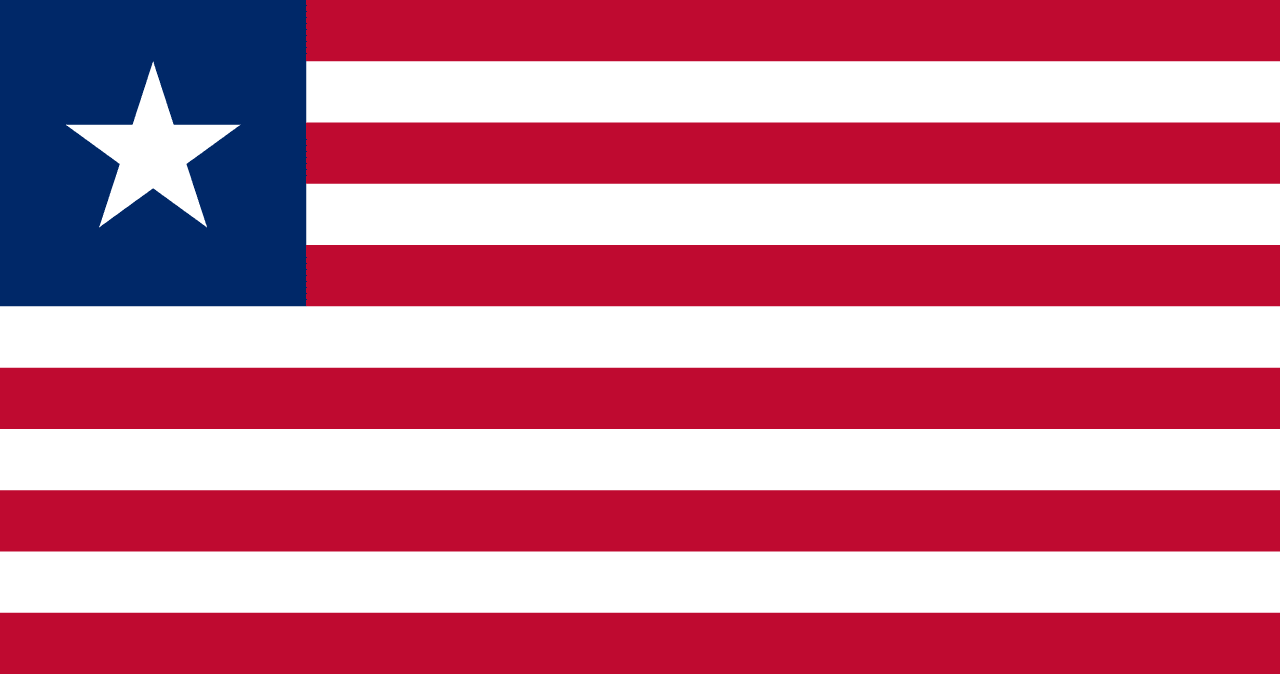
Liberia
Africa
Eleven alternating red and white stripes with a blue canton containing a single white five-pointed star, representing Africa's first republic founded by freed American slaves and its role as a beacon of freedom on the continent.
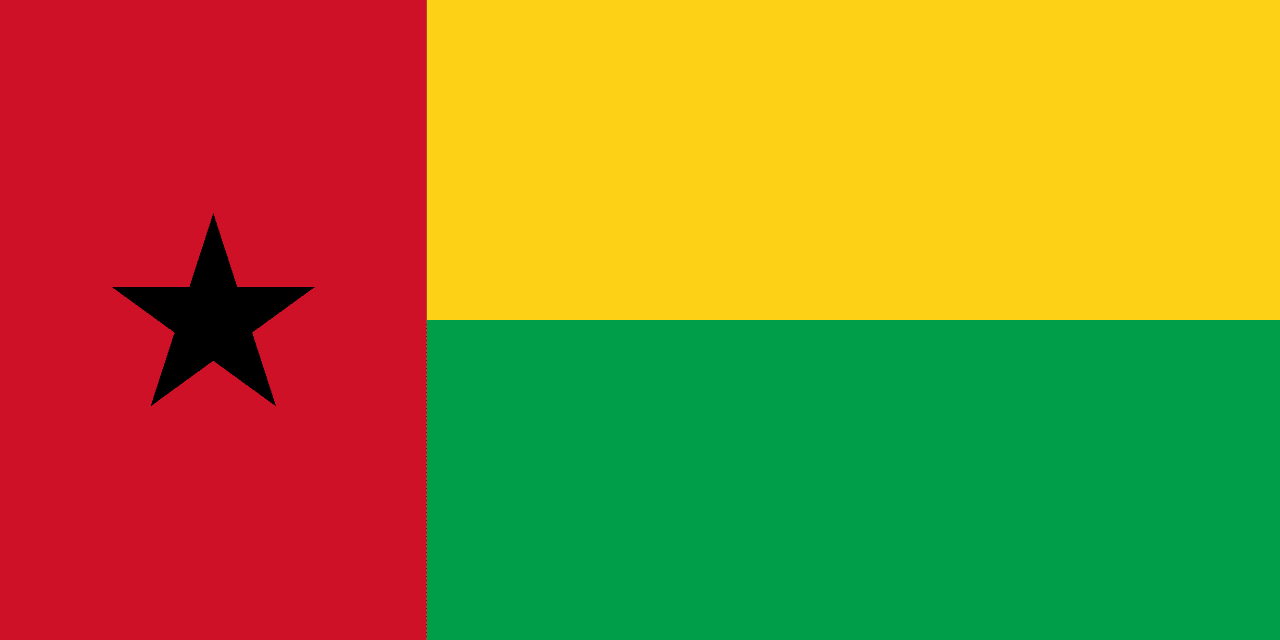
Guinea-Bissau
Africa
A vertical red stripe at the hoist with a black five-pointed star, and two horizontal stripes of yellow over green on the fly side, representing the liberation struggle, unity, hope, and the agricultural wealth of Guinea-Bissau.
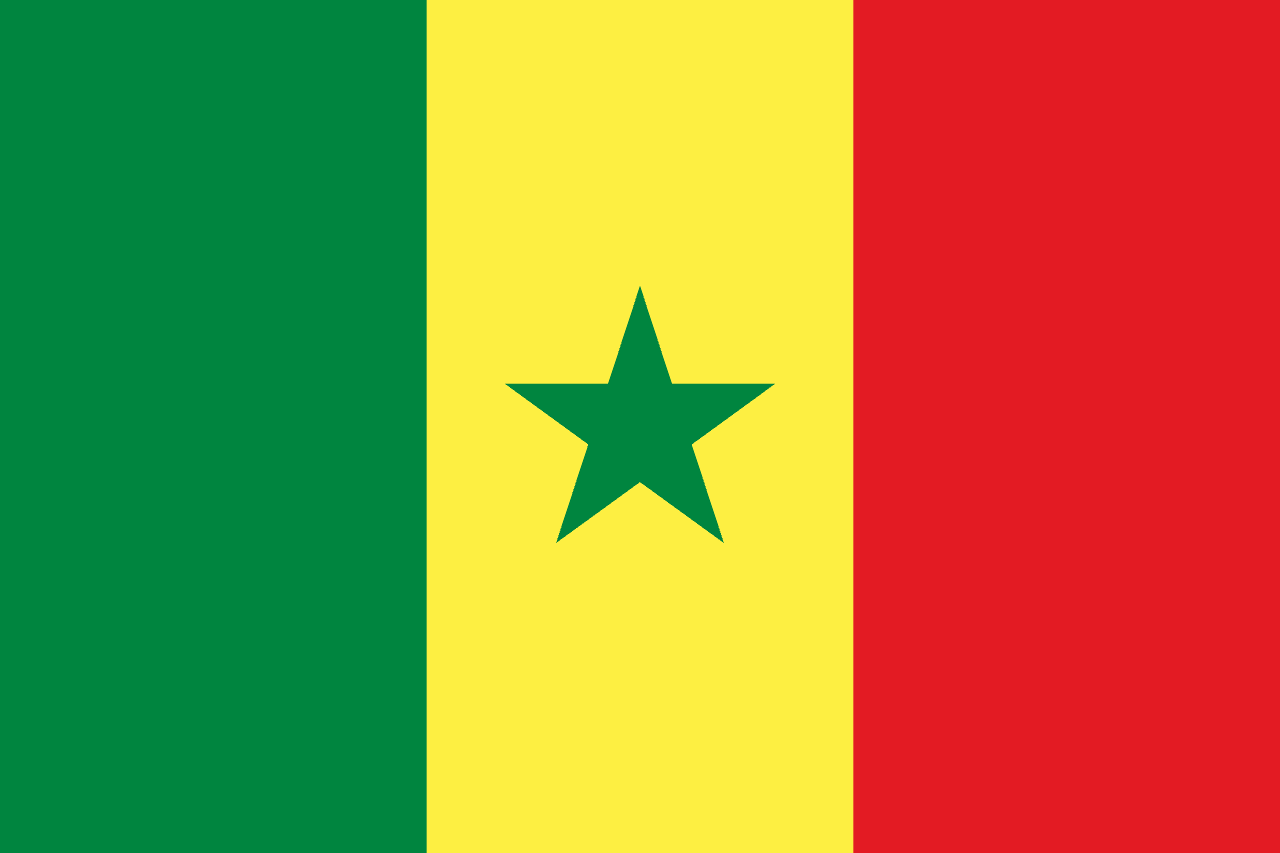
Senegal
Africa
A vertical tricolor of green, yellow, and red with a green five-pointed star centered in the yellow band. The flag reflects Pan-African identity and national unity.
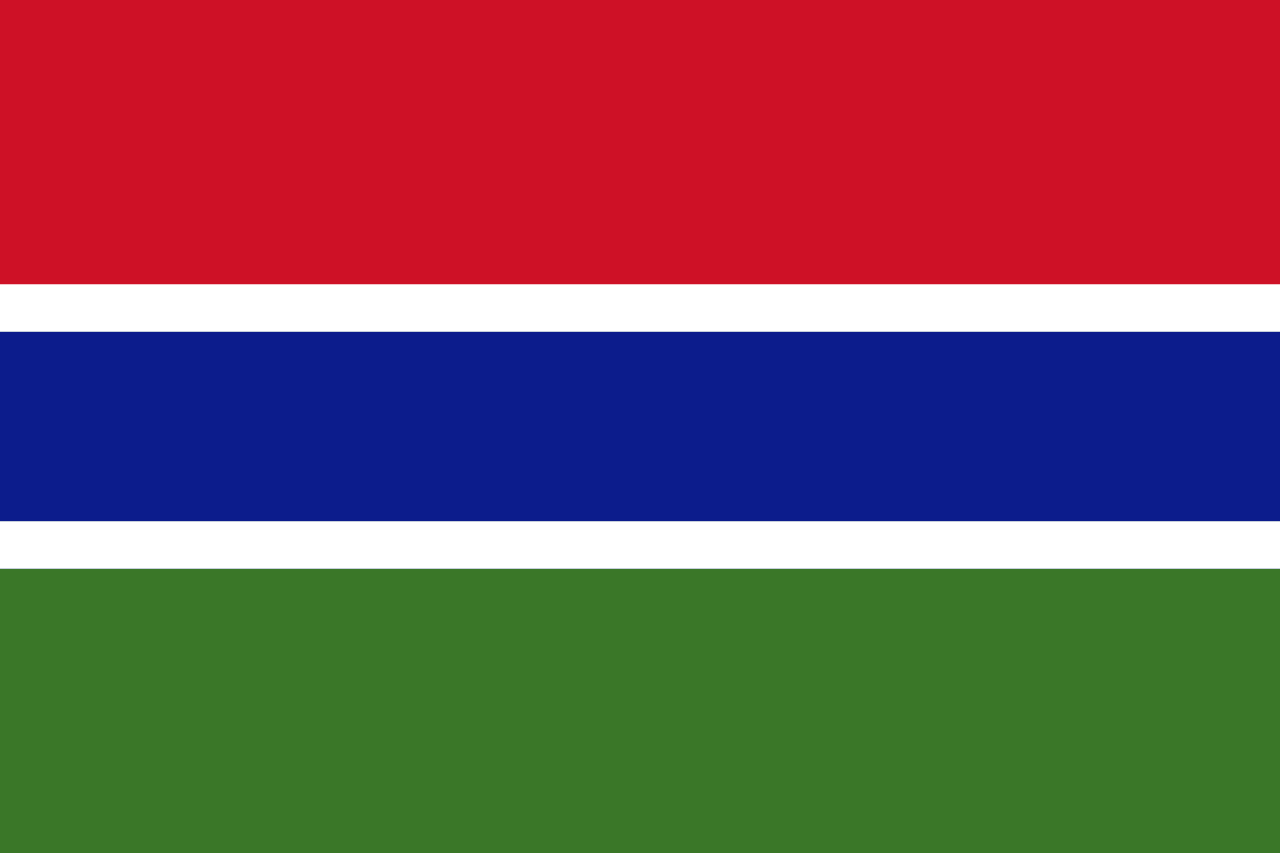
Gambia
Africa
Three horizontal stripes of red, blue, and green separated by thin white stripes, representing the sun, the Gambia River, agriculture, and peace, symbolizing the natural beauty and harmony of the smallest mainland African nation.
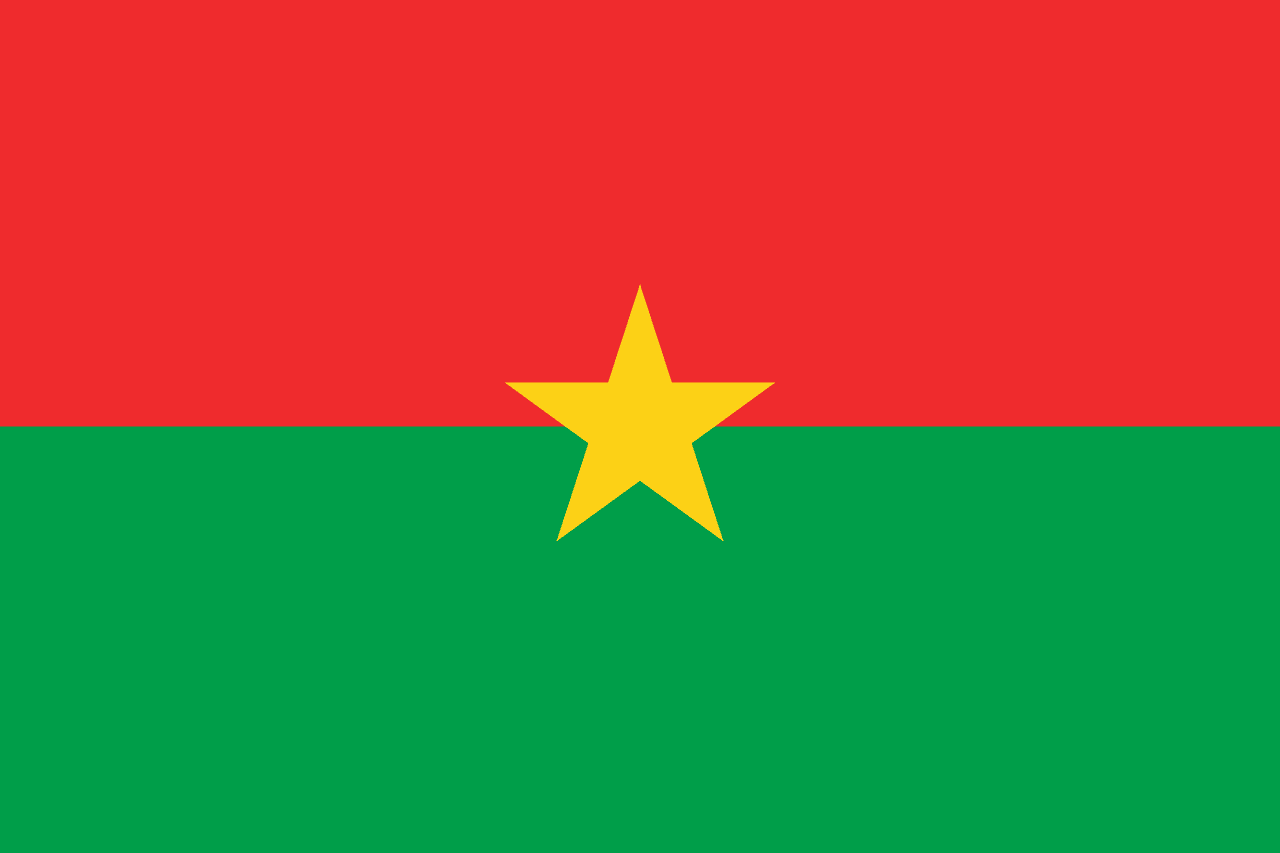
Burkina Faso
Africa
Two horizontal bands of red and green with a yellow five-pointed star in the center, representing the revolutionary ideals, agricultural wealth, and mineral resources of the nation, adopted when the country changed its name from Upper Volta.